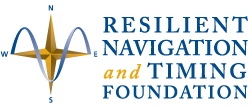Thinking Allowed
In the GNSS race launches are often quoted as the main event for the coming year — there won’t be another launch for Galileo until 2020. Despite this, in 2019 new capabilities are going to be introduced that will allow users to profit even more of the unique features offered by the Galileo system. As Galileo Galilei used to say “e pur si muove” (and yet it moves).
Four more satellites (GSAT 219, 220, 221 and 222) will become operational as of the first quarter of 2019. These are the satellites launched on last July by an Ariane 5 quadruple launch. Throughout 2018 the satellites commissioning tests have been performed successfully confirming the excellent performance of the navigation and search and rescue payloads. Test results are to be presented at the In Orbit Test Review planned in January, following which the L10 S/Cs will enter into service.
The two satellites in elliptical orbit (GSAT201 and 202) will also eventually enter into service in the first semester of 2019. These satellites already have been broadcasting navigation messages since August 2016 for testing purposes. The necessary modifications at the level of the satellites on-board software to provide automatic health status flagging to users and of the ground segment mission uplink and control facility will be deployed to eventually allow the L3 S/Cs to enter into service.
This will bring the number of satellites in service up to 24 (out of 26 in orbit), reaching 100% availability of timing and positioning to Galileo users. I expect further market penetration of dual-frequency applications this year leading to higher real-time accuracies using E1/E5 Galileo signals: E5 to support dual frequency receivers is the current biggest added value of Galileo. This has also been re-enforced by the recent FCC ruling approving E1/E5 use in the U.S. This is mainly due to the higher ranging accuracy and lower multipath error of E5 due to its larger bandwidth as well as to higher E5 power level compared to E1.
In 2019 the ground infrastructure running Europe’s Galileo satellite navigation system will be upgraded. The resulting migration, set to start in February 2019, will incorporate new elements into the world-spanning system and boost the robustness of Galileo services delivered from the satellites in orbit. This important milestone marks the climax of a system qualification campaign that took more than a year to execute1.
Users of Galileo signals will experience concrete benefits of this upgrade of the ground segment, such as an increased robustness of navigation message generation, an improved user protection by automation of SISA warnings and increased accuracy of the navigation messages thanks to improved orbit fitting.
The availability and accuracy of the GPS to Galileo Time Offset (GGTO) broadcast will also be improved. A highly available GGTO dissemination will benefit situations with less satellites under high masking angle. In addition, GGTO target accuracy of 5 nsec will surely help high accuracy applications.
Transmission of Galileo Open Service Navigation Message Authentication will also start in 2019, providing authentication data through the E1B external data broadcast service as part of the I/NAV navigation message. This will allow to start experimentation to demonstrate the application of data level authentication to target use cases such as smart digital tachograph monitoring truck drivers, navigation and fishing in restricted zones, etc.
Besides navigation and timing services, the Galileo Search and Rescue (SAR) services will improve in 2019 as the SAR Return Link Dissemination will start informing users in distress that their message has been received and help is on the way.
The deployment of all these new Galileo capabilities will surely make 2019 an interesting year for GNSS users. These activities go in parallel with the preparation of the Ground Segment and Space Segment to support Full Operation Capability from 2020 onwards. All contracts for infrastructure procurement are now in place and well under way.
These are only some of the many developments expected to come about this year. In summary, a continuous evolution of Galileo services offered to users already as of 2019 and a continuous evolution of ground and space infrastructure projecting Galileo towards Full Operation Capability at the end of this decade.
Once again this confirms what Galileo Galilei used to say “e pur si muove” (and yet it moves).
1. Useful link: http://www.esa.int/Our_Activities/Navigation/Galileo_set_to_grow_with_global_system_update
Marco Falcone, European Space Agency and member of the Inside GNSS Editorial Advisory Council, wrote this Thinking Allowed column for the January/February 2019 issue of the magazine.





